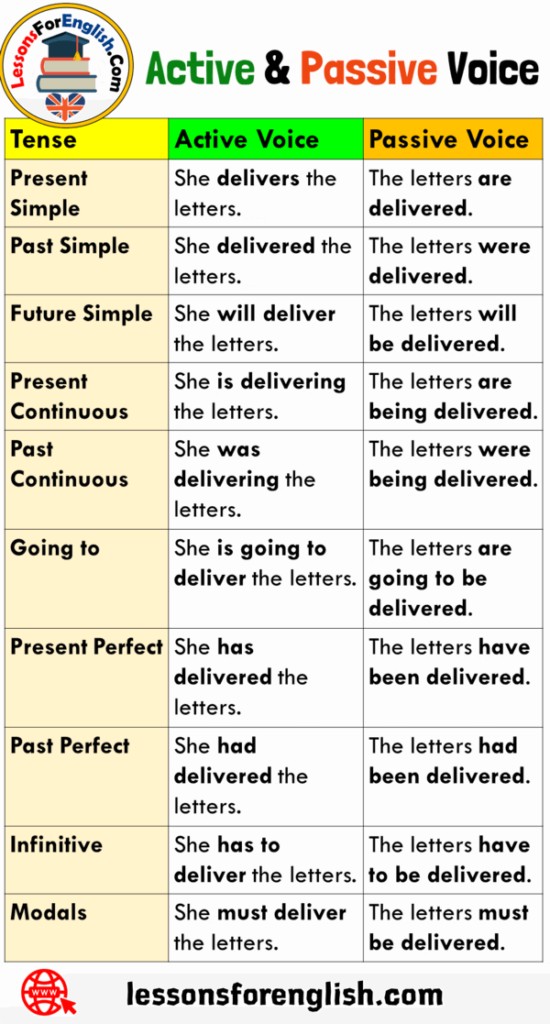Understanding the difference between active and passive voice is crucial in writing clear and concise sentences. Active voice emphasizes the doer of the action, while passive voice focuses on the person or thing that receives the action. By mastering these two forms of voice, you can enhance the clarity and impact of your writing.
Many people struggle with distinguishing between active and passive voice in their writing. However, with practice and awareness, it becomes easier to identify and use them effectively. Let’s explore some examples of both active and passive voice to help you grasp the concept better.
Active and Passive Voice Examples with Answers
1. Active Voice: The chef prepared a delicious meal.
Passive Voice: A delicious meal was prepared by the chef.
In the active voice sentence, the chef is the doer of the action (preparing the meal). In the passive voice sentence, the meal is the receiver of the action.
2. Active Voice: Sarah wrote an interesting article.
Passive Voice: An interesting article was written by Sarah.
Here, Sarah is the doer of the action in the active voice sentence, while the article is the receiver of the action in the passive voice sentence.
3. Active Voice: The students completed the assignment.
Passive Voice: The assignment was completed by the students.
In this example, the students are the doers of the action in the active voice sentence, whereas the assignment is the receiver of the action in the passive voice sentence.
4. Active Voice: The company launched a new product.
Passive Voice: A new product was launched by the company.
Here, the company performs the action in the active voice sentence, while the new product is the recipient of the action in the passive voice sentence.
By practicing with more examples and understanding the nuances of active and passive voice, you can improve the quality of your writing. Remember to use active voice for clarity and directness, while passive voice can be used to shift focus or highlight the receiver of the action. Mastering both forms will make your writing more engaging and impactful.
In conclusion, active and passive voice are essential elements of writing that can enhance the clarity and effectiveness of your sentences. By using the examples provided and practicing regularly, you can improve your grasp of these concepts and elevate your writing to the next level.
